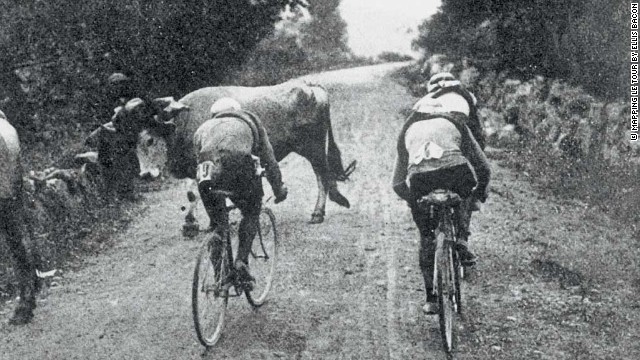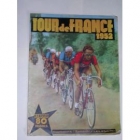The Tour: whose side are you on?
Dr Martin Hurcombe

It can’t be helped. We blokes always become our fathers. As a teenager growing up in the wake of punk, albeit in the leafy outskirts of Cheltenham, I sulkily lumbered around the golf course fulminating against this most bourgeois of sports that my dad insisted I try my hand at, it having been demonstrated beyond all reasonable doubt that I lacked the co-ordination and finesse to make it as a rugby player, let alone a footballer. (And this was the 80s, the age of route one.) Golf, I was told, was a way of meeting people with influence, what we would now call networking. I also rapidly discovered that it had a strict and then rather gaudy dress code. Luckily O Levels gave me an excuse to stay off the fairway for months on end. And as soon as I could I left golf, and Cheltenham, behind. My dad, meanwhile, is still out there wondering the West Country somewhere in his Pringle sweater.
How then am I now to respond to the argument (put about by non-cyclists, of course) that cycling is the new golf? After all, the evidence is all there; witness the massed ranks of largely middle-aged men putting the miles in on a Sunday morning; the lurid lines of lycra steaking through the countryside; and the carbon-fibre bikes, the gadgets and the gismos which are the MAMIL’s new set of clubs and trolley. And this week we will all be encouraged to dig deep into our pockets once more as the Tour with its constant caravane publicitaire tempts us with the latest team strip and the promise of ever lighter bikes to compensate for our fear of ever widening girths.
But it wasn’t always this way. The history of the Tour de France is in fact a history of class warfare. True, the earliest competitive cyclists in both France and Britain tended to be well-healed aristocrats who swapped their racing horses for road bikes. When the French press began to sponsor races, though, and to offer increasingly lucrative amounts of prize money, young workmen and delivery boys who had until then used their bikes as tools of their trade took the sport by storm. In late nineteenth-century France, Christopher Thompson writes in The Tour de France: A Cultural History, you could tell a bourgeois from a worker by their posture when cycling; the bourgeoisie cycled upright and sedately; the young worker, his cap tilted backwards, stooped over his handlebars and sped along the dusty roads of France. The boy racer was born.
The first Tour winners apart from all being French were, by and large, also working class. The Tour’s mastermind and race director between 1903 and 1939, Henri Desgrange, considered them his employees, preaching self-improvement to them, but also issuing fines for a whole range of minor and major misdemeanours. By the 1910s, though, cyclists had become stars in their own right. In 1924, Henri Pélissier, the defending champion, and his brother Charles decided that they had had enough and withdrew from the Tour when fined for discarding layers as the race and the heat progressed. In an interview with the famous journalist Albert Londres they revealed not only Desgrange’s petty managerialism, but also the lengths to which riders went in order to survive the Tour, including rubbing cocaine into their eyes on stages that could be as long as 480km.
In what would become a long-running battle, the French communist daily, L’Humanité, picked up on the Pélissiers’ attack on the Tour, turning it into an all-out assault on the race’s guiding principles. L’Humanité dismissed the race as a form of working-class exploitation, developing the concept of the forçat de la route [the hard-labourer of the road], first formulated by Londres, and a commercial betrayal of the spirit of sport, which should always be amateur. The Tour, for communists, was a capitalist enterprise, taking advantage of young working-class men that it would tempt with prizes only a few could ever win.
Nevertheless, cycling and the Tour remained extremely popular amongst the French working class who lined its routes throughout the 1930s and who stood alongside middle-class spectators equally drawn to the spectacle of riders’ suffering and triumph. And, as French communists vied for power and influence through the ballot box in the late 1930s, they too came to love if not the Tour itself, then the riders it now attempted to cast as national working-class heroes. The truth of the matter, though, was that successful cyclists were winning small fortunes of which most French workers could only dream and which they then often invested in their own cycling businesses. Indeed, many young working-class men saw cycling as a means of rapid financial success and social climbing. In short, cycling was a way of becoming if not respectable, then at least middle class. So, fellow cyclists, embrace the inevitable and the one true revolution: that of the road-bike wheel, just so long as it has a full-carbon rim with a rounded profile and concealed aluminium nipples.


